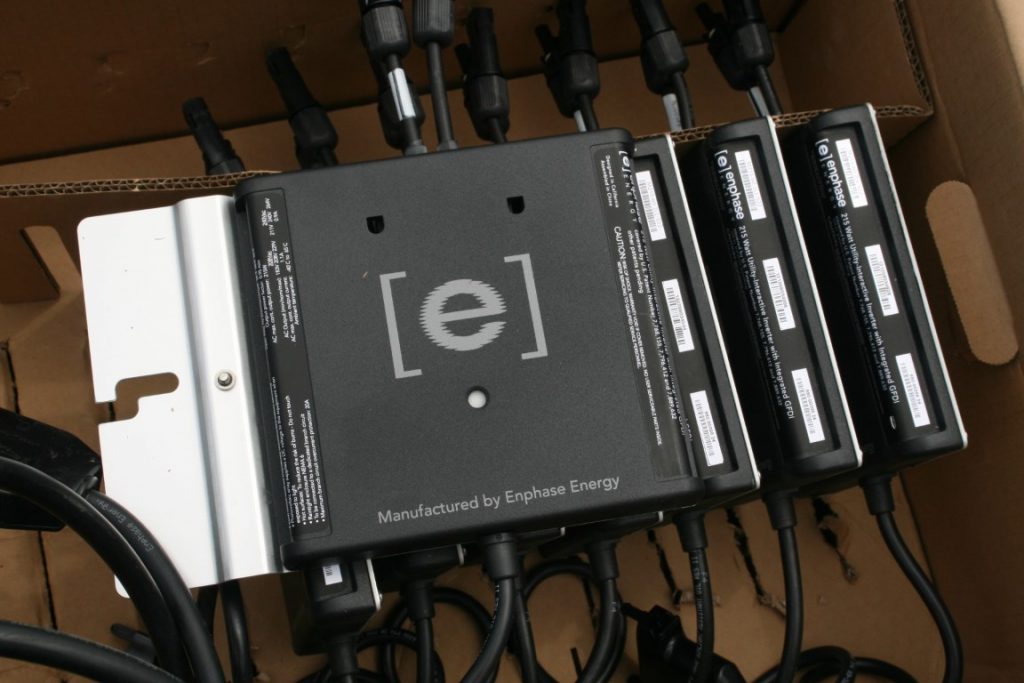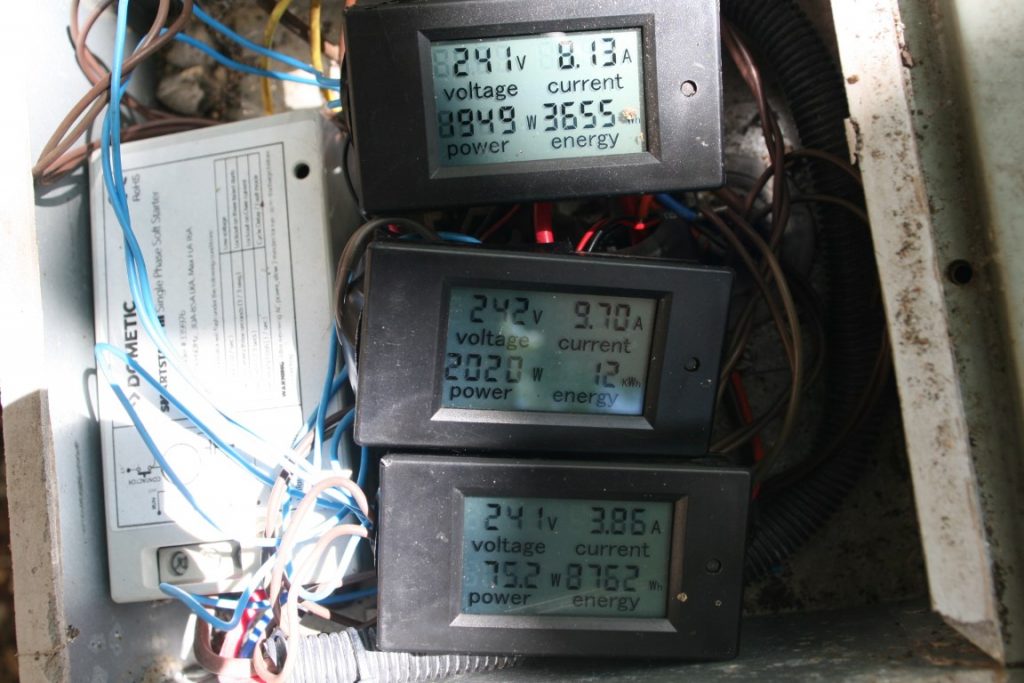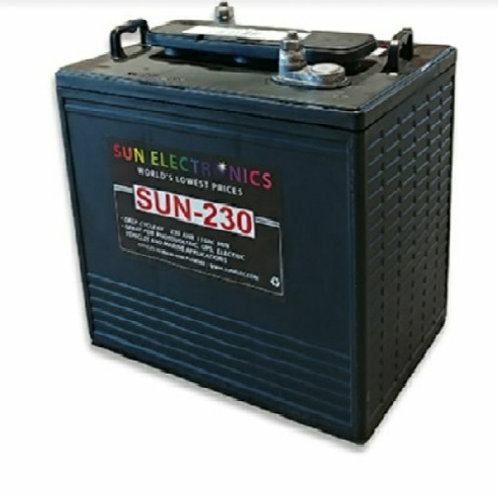What is a microinverter and how can you use it?
You have solar panels and you want to do something with the DC power, you’ll often need some kind of inverter. The microinverter was designed as a grid tie inverter to pump your solar DC into the power grid. There’s more.
In the beginning there was a thing called a synchronous inverter. It was a big box on the wall that took all of your solar power and pumped it into the power line. It was a grid-tie inverter, but nobody had come up with that catchy term. It could stop or run your power meter backwards. Nobody could really afford a bunch of solar in those days, so the power company didn’t catch on and charge a bunch extra.
Then somebody came up with putting a wee grid-tie inverter on the back of EACH solar panel. First time I heard of that I thought it was a really bonehead idea. They have evolved and from what I see, these are the number one way of doing grid-tie. I think it probably boils down to labor cost. I had a case of them to play with and will try to pass along some of the fun things you can do with them.
Each module (sometimes it is 2 modules per micro) gets a microinverter bolted to the back. The racking goes up on the roof. Then a long black cable with funny connectors along its length is spread out along the roof. A pass thru is installed to get the cable through the roof and it connects to a breaker or cutoff at the house’s panel or someplace handy for the Fire Department to cut the power.. Finally, as you bolt the panels into place, you plug the connectors to the microinverters. Ta da!
Yeah, there are inspections and you have to make arrangements with The Power Company. Often, TPC will make you wait a month or two before you can turn it on, will make you pay for insurance, charge a bunch every month for the capacity of your system and then give you just a little money for your Kilowatt Hours or KWH. Or, you could get lucky and live in a net metering area. Then grid tie is a good deal.
Let’s say you are among the lucky few to be in on the net metering gravy train. What happens when the lights go out? Well, they go out. There’s no storage. Some of the big box GT inverters and some of the latest micros can provide daytime islanding, or power in your house at a vastly reduced rate, probably to account for passing clouds and such. It is enough to keep the fridge and a few lights on.
So those are the basics. What if you do NOT want to go with grid-tie, but have a case of microinverters and a pallet of solar panels? That’s where it gets fun.

If you root around way back in the blog, you may still find some stuff I did with a/c. I’m in Florida and a/c is very dear to me. Watching the weather reports at night, I think a/c is becoming important to everybody else! Under the hood of your outside unit, there is a contactor or relay that uses the 24vac signal from your indoor thermostat to connect the 240 volts to run the compressor. If you connect the AC side of your GT microinverters to the compressor side of that relay and size your solar source to just a smidgen less that what the a/c uses the solar power will be directly consumed by the a/c and none will flow back to the grid. No need to involve TPC and pay their fees. This works. I had both of my compressors heavily instrumented and had all the figures. There are downsides to this method. When the compressor switches on, there is a mandatory 5 minute delay before the micro kicks in. I improved performance by just running the smaller upstairs unit pretty much all the time during the day. Another problem is those dang clouds. Forget that “Sunshine State” crap. It ain’t so. And then it didn’t work at all at night.

The Mark II version of this system DID work at night. The Enphase inverters will limit power to what they can handle. There are some cheapo Chinese GT inverters on Ebay that will blow up if given a high current source because they do not limit. SO, I connected the solar panels through a charge controller to a stack of golf car batteries, like the Sun 230 that John and Roberto sell. Actually, I connected a lot of panels to charge the batteries. Then I connected the batteries to the DC inputs of the appropriate number of micros. NOW, the sun was not wasted when the a/c was off, it went into batteries. And because there were batteries, they worked when running the a/c at night!


That big black cable that connects the micros is awfully expensive. If you find a deal on a sack full of micros, make sure they come with the “drops” as they are called. The cables are not only weatherproof, but they also contain a communications channel, which can enable another neat trick. Let’s say you want to counter power use in the entire house, but not go grid tie. There are several companies that make communications controllers that can sense the overall flow of power and throttle back the flow before any can escape to the grid. Your meter will rat you out if you grid tie without approval. If that happens, the big white truck comes and then you got some ‘splaining to do, like Lucy Ricardo. Connect the AC side of the micro to a 240v breaker in the panel and run the sensor coils from the main lines coming in from the grid to your communications controller. The battery trick should work here, too, but unless you have micros with the limited AC backup function it is still not a good solution for the grid failure condition. If you are buying batteries and charge controllers you are better going ahead with a hybrid system that I go on about so often.
There’s another really bonkers trick you can try if you have a battery hybrid or off grid system. I was one of many of the people who bought the bankruptcy inventory of DC Solar company’s solar trailers. Complete system in portable format. Some of these guys must have terminal disease or be just plain crazy with some of the stunts they’ve pulled. Some blew up some expensive hardware and some came up with some cool hacks.
What happens if you have an off-grid power system and connect a string of microinverters to the output of your inverter? The micros think they are syncing with the grid. Well, if you have the communications system with the limiting sensors the micros will help out with your load. Say, you could have the 12kw inverter that came on the trailer just idling while the micros sync to it and provide all the power for your 3kw a/c and the 500 watt fridge. But if you don’t have the limiter or if you have the older, stupid micros, they will actually backfeed through the inverter and charge your battery. There is some possible peril here, depending on battery and system size. As the battery approaches full, the regular charge controllers will back down and the only charging or overcharging will come from the micros. With the size of the batteries we got with our trailer systems it is unlikely you’d have enough micro capacity to damage anything, as long as the micro capacity is smaller than what the transistors in the inverter can handle. Use this trick with caution.
What I have not yet come up with is a really good way for someone like my neighbor EJ who has a really, really bad deal on a grid tie system full of microinverters to fully utilize his solar capability without spending a lot more money. Best I can come up at this point is to get the communication controller, shut down the grid export and to tell TPC what they can do with their GT meter and associated monthly fees. By scheduling most of his heavy power use during the daytime he could make a serious dent in his power bill.
–Neal
